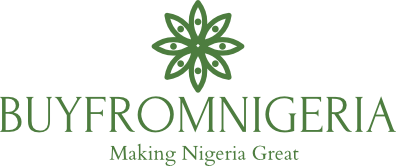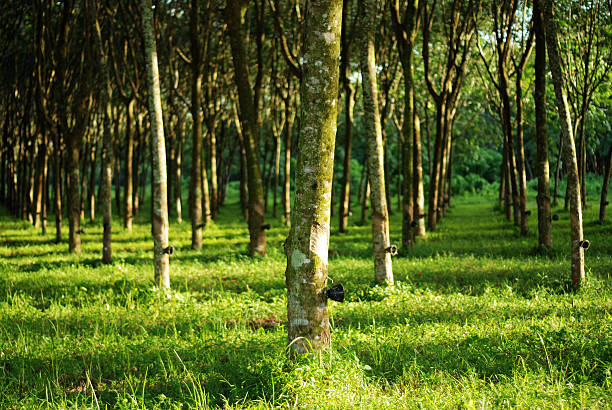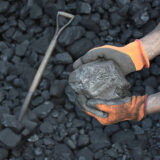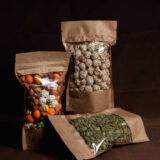Nigeria, a land blessed with fertile soil and abundant sunshine, harbors a golden treasure within its embrace – natural rubber. This versatile, resilient material, extracted from the sap of the Hevea brasiliensis tree, pulsates through countless aspects of modern life, from tires and medical gloves to mattresses and sports equipment.
For discerning entrepreneurs and established businesses alike, exporting Nigerian rubber presents a thrilling avenue for success. This comprehensive guide, tailor-made for those eager to tap into this lucrative market, equips you with the knowledge and tools to navigate every step of the journey, from market research and business registration to processing, logistics, and beyond.
Getting started with rubber export
Market research:
Before diving into the world of rubber export, thorough market research is crucial. This involves:
Identifying potential buyers: Research international rubber importers, particularly those focusing on the specific grades and types of rubber you plan to export. Consider attending trade shows or conferences related to the rubber industry to connect with potential buyers directly.
Understanding rubber grades and specifications: Different rubber grades cater to diverse applications. Familiarize yourself with the international rubber grading system (NRRS) and the specific requirements of your target markets. This knowledge helps ensure you provide rubber that meets your buyers’ exact needs.
Researching current market trends and prices: Stay updated on global rubber production, consumption, and pricing trends. Analyze supply and demand dynamics to predict future market movements and set competitive export prices.
Business registration and licensing:
Formalizing your export business is essential. This involves:
Obtaining an export license: Contact the Nigerian Export Promotion Council (NEPC) or any authorized customs office to apply for an export license specific to rubber products.
Registering with relevant government agencies: Register your business with the Corporate Affairs Commission (CAC) and obtain a Tax Identification Number (TIN) from the Federal Inland Revenue Service (FIRS). Additional registrations may be required depending on your chosen export methods and specific rubber types.
Setting up a business bank account: Open a dedicated bank account for handling export transactions. This simplifies financial management and facilitates international payments.
Sourcing rubber:
Securing a reliable source of high-quality rubber is paramount. Consider these options:
Establishing relationships with rubber plantations or farmers: Directly contract with rubber plantations or local farmers to ensure consistent supply and quality control. Building long-term partnerships can benefit both parties.
Negotiating contracts for supply: Clearly define the rubber grades, quantities, pricing terms, and delivery schedules in written contracts to avoid future disputes. Consider including quality control clauses to protect your interests.
Ensuring quality control: Implement a quality control system to verify that the supplied rubber meets international standards and your buyers’ specifications. This could involve physical inspections, laboratory testing, and adherence to international quality management systems.
Processing and Preparing Rubber for Export
Once you’ve sourced your rubber, preparing it for export involves transforming it into a form acceptable for international trade. This section delves into the processing methods, packaging considerations, and labeling requirements to ensure your rubber arrives at its destination in optimal condition.
Rubber Processing Methods:
Field latex collection: This involves tapping rubber trees and collecting the milky latex sap into cups. The latex is then transported to processing facilities for further treatment.
Tapping and coagulation: The latex is treated with an acidifying agent like acetic acid to trigger coagulation, separating the rubber solids from the liquid serum.
Centrifugation and crepeing: The coagulated rubber undergoes centrifugation to remove excess water and latex serum. It is then passed through rollers to form thin sheets called crepes, which are dried for further processing.
Smoking and drying: Some rubber grades, particularly smoked sheet rubber (RSS), are prepared by smoking the crepes over burning wood or coconut shells. This imparts a characteristic aroma and enhances the rubber’s physical properties. Drying completes the process, ensuring the rubber reaches the desired moisture content for storage and export.
Packaging and Labeling:
Choosing the right packaging materials: The choice of packaging depends on the rubber grade and transportation method. Common options include:
- Bales: Packed with hessian or polypropylene woven bags, suitable for bulk shipment.
- Cartons: Used for high-grade rubber like RSS, offering protection and easier handling.
- Pallets: Bales or cartons can be stacked on pallets for efficient container loading.
- Labeling requirements: All export rubber packages must be clearly labeled with the following information:
- Exporter name and address
- Importer name and address
- Country of origin (Nigeria)
- Rubber grade and specifications
- Net weight and tare weight
- Any special handling instructions
- Marking and numbering bales: Each bale should be individually marked with a unique identification number for traceability purposes.
Marketing and Sales: Reaching Your Global Audience
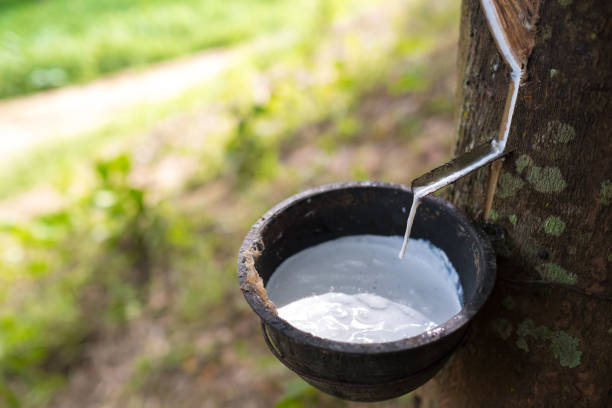
Exporting natural rubber isn’t just about production and shipping; it’s about connecting your product with the right buyers across the globe. This section will guide you through effective marketing and sales strategies to establish a strong presence in the international rubber market.
Building Relationships through Trade Shows and Conferences:
Participation: Immerse yourself in the industry by attending international rubber trade shows and conferences. These events provide prime opportunities to:
- Meet potential buyers: Network with representatives from tire manufacturers, rubber processors, and trading companies.
- Showcase your products: Exhibit your rubber grades and highlight your strengths like consistent quality and sustainable sourcing.
- Learn from industry experts: Attend conferences and workshops to gain insights into market trends, emerging technologies, and best practices.
Targeted approach: Research upcoming events relevant to your target markets and rubber grades. Focus on those with a high concentration of potential buyers and industry decision-makers.
Stand out from the crowd: Invest in a visually appealing booth that reflects your brand and product quality. Offer informative materials and prepare persuasive presentations to engage with potential buyers.
Mastering the Digital Marketplace:
Website and online store: Develop a professional website showcasing your company, production processes, rubber grades, and export capabilities. Consider incorporating an online store for direct interaction with international buyers.
Social media marketing: Utilize platforms like LinkedIn and Twitter to connect with industry professionals, share news and updates, and promote your brand. Engage in relevant online communities and build your audience.
Content marketing: Create valuable content for your website and social media platforms, such as blog posts, case studies, and white papers. Address industry challenges, offer valuable insights, and establish yourself as a thought leader in the rubber export market.
Leveraging Government Support:
Export promotion agencies: Utilize support programs and services offered by Nigerian export promotion agencies like NEPC (Nigerian Export Promotion Council). These agencies offer market research, trade mission opportunities, and financial assistance for exporters.
Government trade shows and delegations: Participate in trade shows and delegations organized by the Nigerian government, allowing you to capitalize on their established relationships and marketing efforts.
Building Long-Term Partnerships:
Customer relationships: Prioritize building strong and lasting relationships with your buyers. Be transparent, reliable, and responsive to their needs. Provide excellent customer service and consistently deliver high-quality rubber.
Contract negotiations: Clearly define terms and conditions in your export contracts, covering aspects like pricing, quality specifications, delivery schedules, and payment terms.
By implementing these marketing and sales strategies, you can effectively reach your target audience, build brand awareness, and establish yourself as a reliable supplier of Nigerian natural rubber in the global market. Remember, success in export requires not just a quality product but also a proactive approach to connecting with the right buyers and building lasting partnerships.
Legal and Regulatory Compliance
Navigating the legal and regulatory landscape of international trade is crucial for any exporter, and exporting natural rubber from Nigeria is no exception. This section covers essential aspects of legal compliance you must consider to operate smoothly and avoid potential pitfalls.
Export Control Regulations:
Permits and Licenses:
- Export Permit: Obtain an export permit from the Nigerian Export Promotion Council (NEPC) for all rubber exports. Specific additional permits may be required depending on the rubber grade and destination country.
- Phytosanitary Certificate: For untreated rubber, get a phytosanitary certificate from the National Plant Protection Service (NPPS) to certify it is free from plant diseases.
International Trade Agreements:
- ECOWAS and AU Trade Agreements: Nigeria is a member of the Economic Community of West African States (ECOWAS) and the African Union (AU), granting preferential trade terms for rubber exports to member countries. Familiarize yourself with relevant agreements and utilize them to maximize market access.
- CITES Convention: Certain rubber species fall under the Convention on International Trade in Endangered Species of Wild Fauna and Flora (CITES). Verify if your exported rubber requires CITES permits.
Sanctions and Embargoes: Stay updated on international sanctions and embargoes that may restrict or prohibit rubber exports to specific countries. Ensure your activities comply with such restrictions.
Intellectual Property Protection:
Trademarks and Patents: If you have developed unique processing methods or branding for your rubber products, consider registering trademarks and patents to protect your intellectual property rights in international markets.
Geographical Indications: If your rubber originates from a specific geographical region known for its quality, explore registering it as a Geographical Indication (GI) to prevent imitation and capitalize on its distinct reputation.
Conclusion
This guide has served as your comprehensive roadmap to becoming a successful exporter of natural rubber from Nigeria. By continuous search for knowledge and a willingness to adapt to the change in market dynamics, you can discover and establish a unique pathway in the Nigerian rubber export market and contribute to the nation’s economic growth. Remember, hard work, dedication, and a commitment to quality will pave your path to success. So, venture forth with confidence, and may your rubber export journey be prosperous and rewarding!
